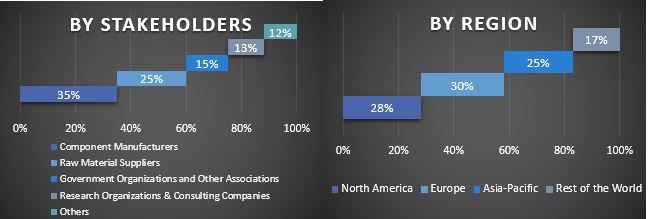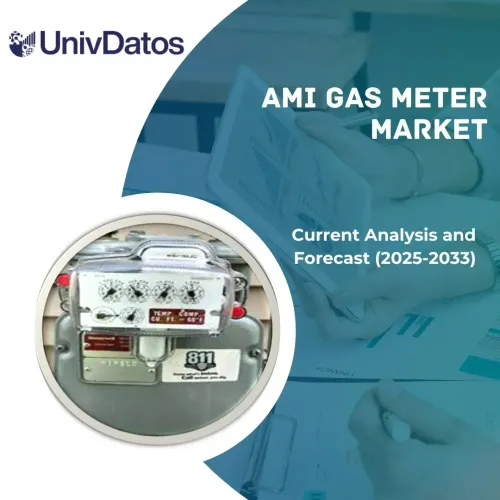- Home
- About Us
- Industry
- Services
- Reading
- Contact Us
Power SCADA Market: Current Analysis and Forecast (2024-2032)
Emphasis on Architecture (Hardware, Software, and Services); Component (Communication System, Master Terminal Unit, Human Machine Interface, Remote Terminal Unit, Programmable Logic Controller, and Others); End-Users (Oil & Gas, Water & Wastewater Treatment, Metal & Mining, Chemicals, Transportation, and Others) and Region/Country
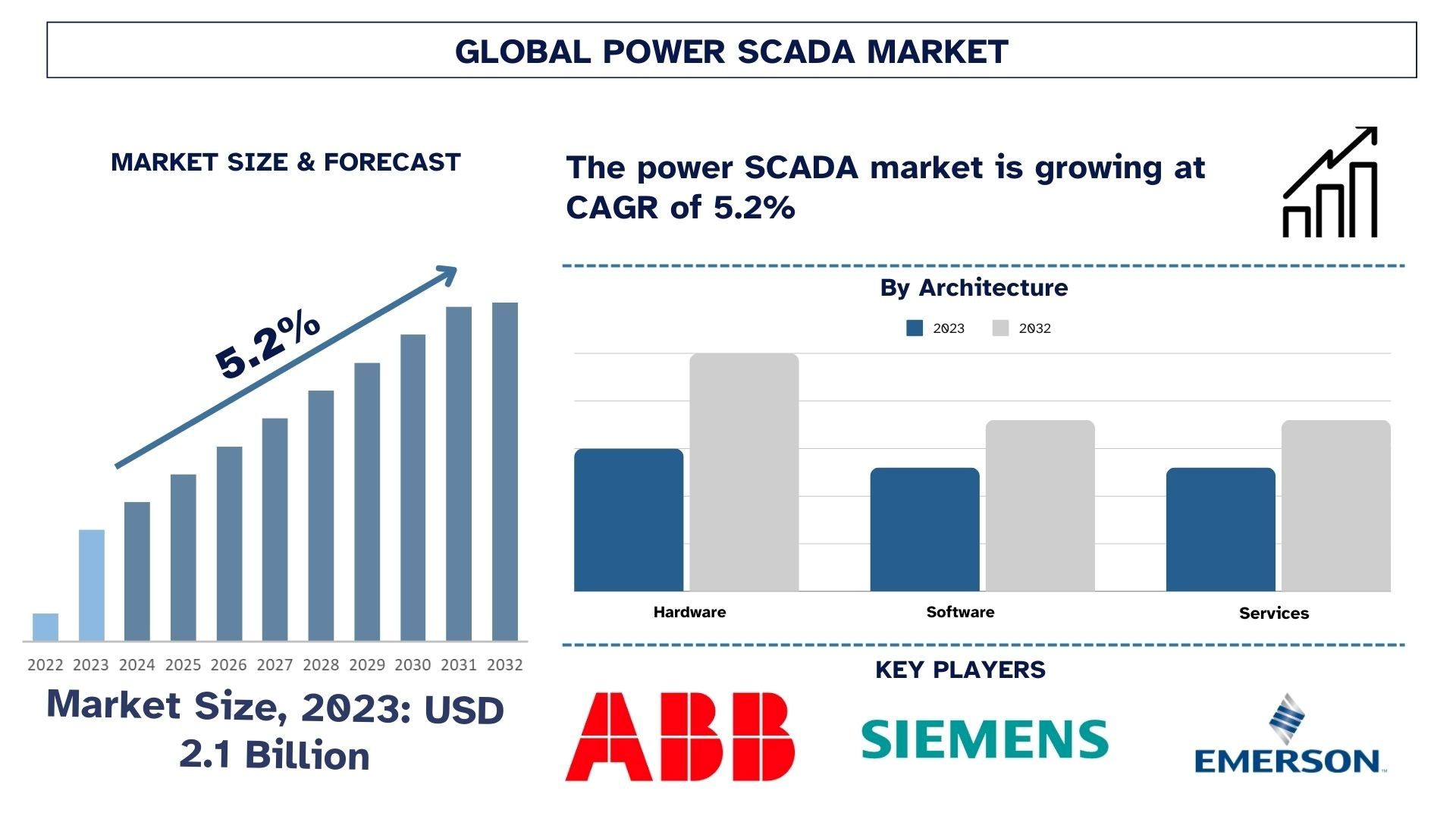
Power SCADA Market Size & Forecast
The Power SCADA Market was valued at approximately USD 2.1 Billion in 2023 and is expected to grow at a robust CAGR of around 5.2% during the forecast period (2024-2032). The Power SCADA market trends towards growth due to the continued need for power systems monitoring and management to improve the power grid stability and performance.
Power SCADA Market Analysis
The global power SCADA market is driven by factors such as aging network infrastructure and grid modernization. Across the world, most power distribution and transmission networks are old thus presenting reliability and safety concerns. In this respect, state and local governments and utilities are exploring grid modernization as a solution to increase reliability and improvement. The Power SCADA systems also have a significant role in monitoring, controlling, and automating the process in line with real-time. They manage energy flow, interconnect renewable resources, and assist in preventive process management.
Moreover, as the world population and the standard of living rise dramatically, the pressure on existing power generation and distribution networks also rises. Purchasers globally, both in the developed and developing areas of the world, are seen to be increasing their capital expenditure to meet increasing power generation and distribution demands. Energy consultancy indicates that global energy demand could reach as high as 30% within the next twenty years. Such demand level can only be met by constructing new power plants and upgrading the transmission networks that transmit power to both industrial and remote consumers. These systems are critical in helping utilities manage the assets with efficiency that ensures enhancement of electricity delivery to the growing demand. Regarding SCADA, the grid operators have an overview of the generation, transmission, and distribution system to identify any weaknesses or limitations in real-time.
Power SCADA Market Trends
This section discusses the key market trends influencing the power SCADA market segments as identified by our research experts.
Hardware Architecture Type Transforming Industry
The hardware segment is expected to grow with the highest CAGR during the forecast period. Being the primary constituents that enable the control and monitoring activity, hardware is the heart of every SCADA system. That is, it is discrete devices like remote terminal units, programmable logic controllers, communications equipment and interfaces, and human-machine interfaces that gather field data, respond to control signals, and provide process data to the operators. The predictable and accurate function of these devices is critical for managing the generation, transmission, and distribution of electric power. Possible hardware problems or any interruption caused by it may lead to a great threat to the stability and safety of the electricity supply. Far from optimal, outages decrease capacity and raise costs and, concerning technical faults, end up decreasing worker safety and even causing blackouts. Consequently, the companies that produce the hardware make their premier emphasis on the products’ durability, warranty, security from cyber threats, and built-in back-ups.
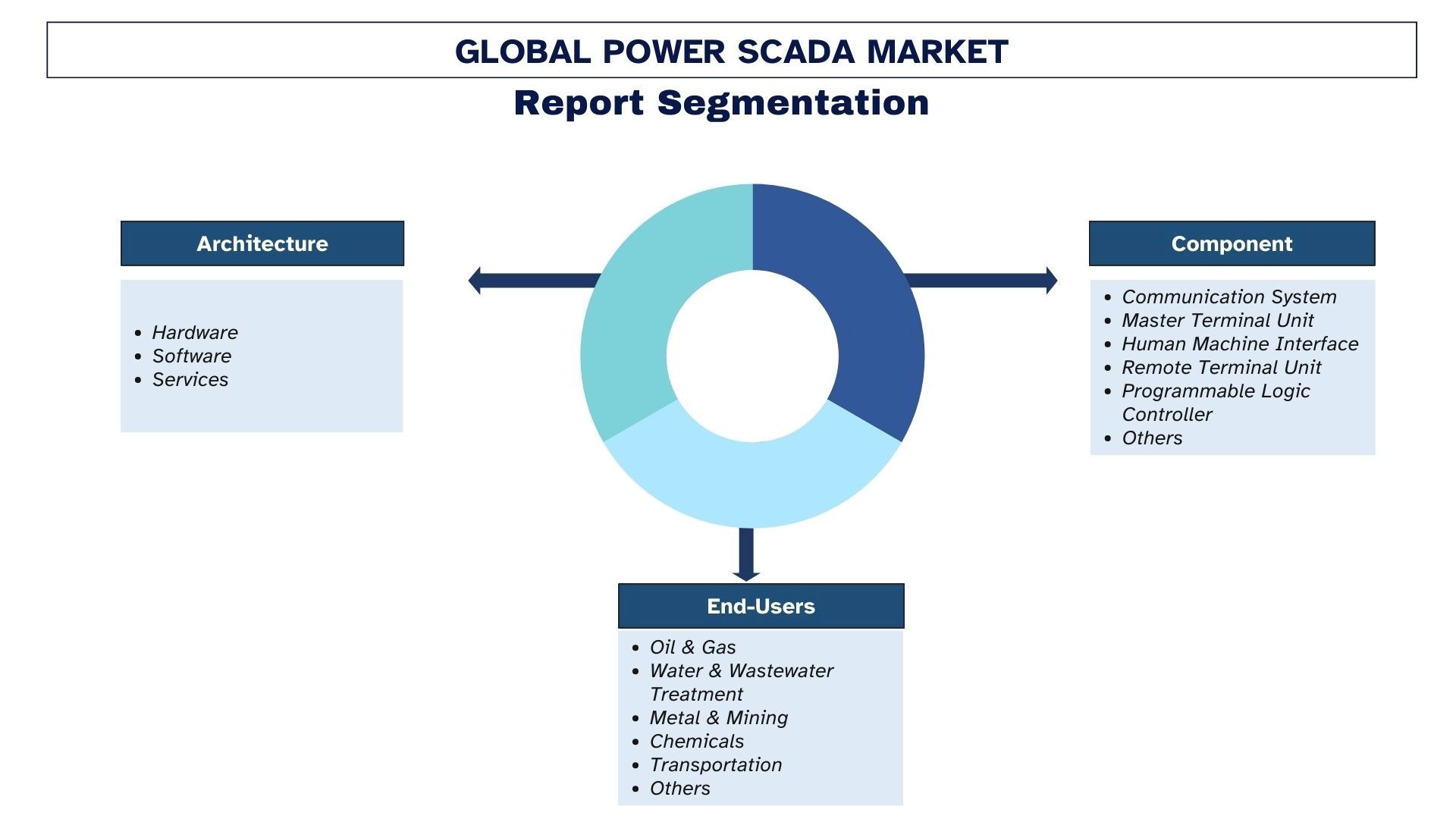
Asia Pacific is Expected to Grow with Significant CAGR During Forecast Period
Asia Pacific is expected to grow with a significant CAGR during the forecast period. The Asia-Pacific region is anticipated to show a high growth rate during the forecast period due to factors such as increased urbanization, industrialization, and supporting policies for grid upgrades. Many countries such as the people’s Republic of China, India, and Japan are spending a lot of funds to improve power infrastructure to improve reliability. Moreover, the integration of renewable energy is rapidly growing in the region, and grid management systems will become more sophisticated. The extension of transmission and distribution networks is another factor encouraging the use of SCADA systems.
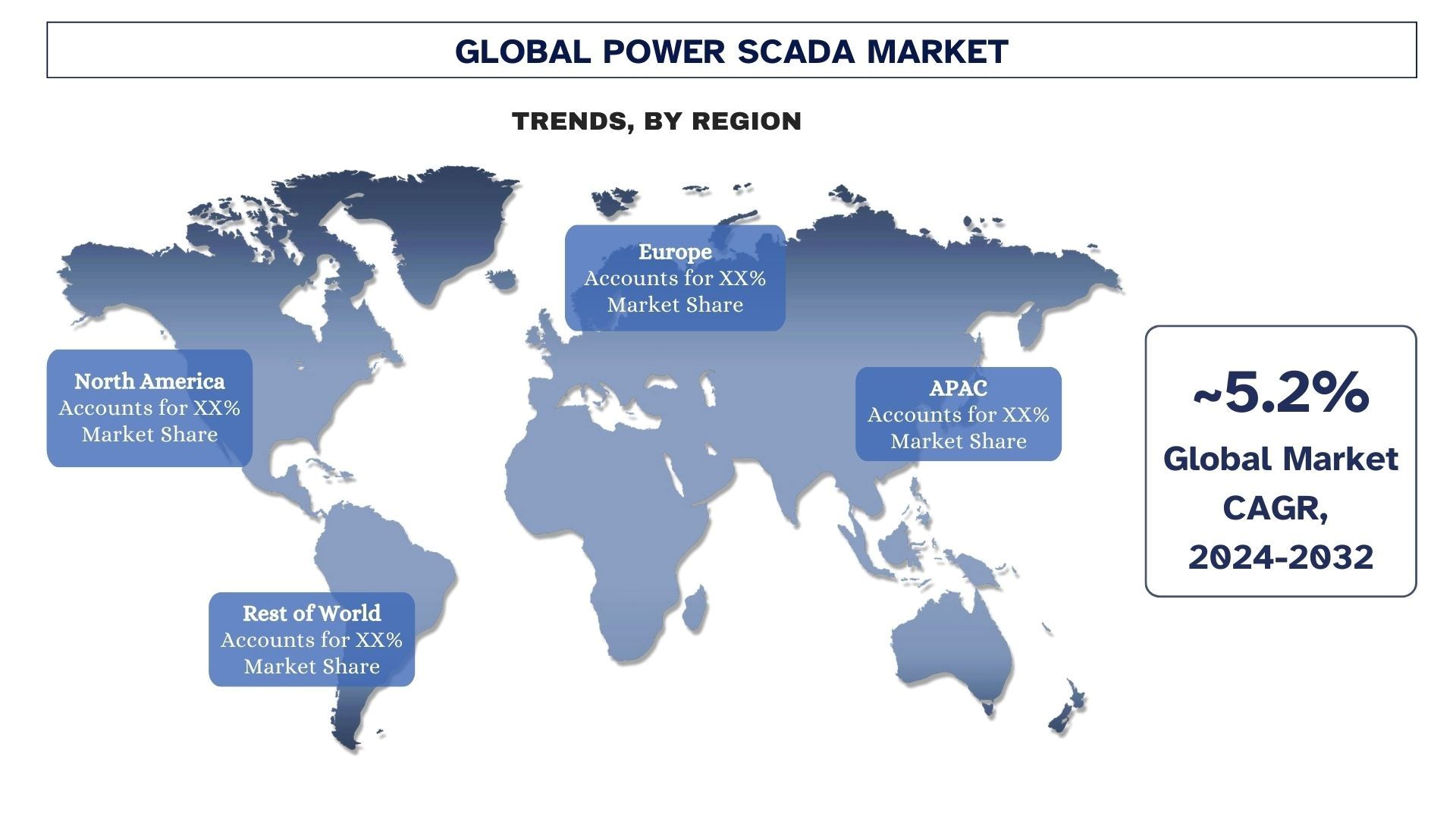
Power SCADA Market Overview
The power SCADA market is competitive, with several global and international market players. The key players are adopting different growth strategies to enhance their market presence, such as partnerships, agreements, collaborations, new product launches, geographical expansions, and mergers and acquisitions. Some of the major players operating in the market are ABB, Siemens, Emerson Electric Co, Schneider Electric, Rockwell Automation, Mitsubishi Electric Corporation, Honeywell International Inc., Yokogawa Electric Corporation, Aspen Technology Inc., and Indra Sistemas.
Power SCADA Market News
For instance, in 2024, Electrification and automation major ABB has surpassed 10GW in delivering solutions for renewable energy plants in India. This is a result of over 300 renewable energy projects across India utilizing ABB's IoT-based PLC solution.
For Instance, GE T&D India Ltd. announced receiving an order from Power Grid Corporation of India Ltd. for the supply, installation, testing, commissioning, and maintenance of SCADA/EMS control centers. These control centers are integral to the power system, sensing its pulse, adjusting conditions, coordinating movements, and providing defense against external events. SCADA operates as an on-premises solution, with all control and data storage on a physical server.
Power SCADA Market Report Coverage
Report Attribute | Details |
Base year | 2023 |
Forecast period | 2024-2032 |
Growth momentum | Accelerate at a CAGR of 5.2% |
Market size 2023 | ~USD 2.1 billion |
Regional analysis | North America, Europe, Asia-Pacific, Rest of the World |
Major contributing region | Asia Pacific is expected to grow at the highest CAGR during the forecasted period. |
Key countries covered | U.S., Canada, Germany, France, UK, Spain, Italy, China, Japan, and India |
Companies profiled | ABB, Siemens, Emerson Electric Co, Schneider Electric, Rockwell Automation, Mitsubishi Electric Corporation, Honeywell International Inc, Yokogawa Electric Corporation, Aspen Technology Inc, and Indra Sistemas. |
Report Scope | Market Trends, Drivers, and Restraints; Revenue Estimation and Forecast; Segmentation Analysis; Demand and Supply Side Analysis; Competitive Landscape; Company Profiling |
Segments Covered | By Architecture, By Component, By End-User, and By Region/Country |
Reasons to buy this report:
The study includes market sizing and forecasting analysis validated by authenticated key industry experts.
The report presents a quick review of overall industry performance at one glance.
The report covers an in-depth analysis of prominent industry peers with a primary focus on key business financials, product portfolios, expansion strategies, and recent developments.
Detailed examination of drivers, restraints, key trends, and opportunities prevailing in the industry.
The study comprehensively covers the market across different segments.
Deep dive regional level analysis of the industry.
Customization Options:
The global power SCADA market can further be customized as per the requirement or any other market segment. Besides this, UMI understands that you may have your own business needs; hence, feel free to connect with us to get a report that completely suits your requirements.
Table of Content
Research Methodology for the Power SCADA Market Analysis (2022-2032)
Analyzing the historical market, estimating the current market, and forecasting the future market of the global Power SCADA market were the three major steps undertaken to create and analyze the adoption of Power SCADA in major regions globally. Exhaustive secondary research was conducted to collect the historical market numbers and estimate the current market size. Secondly, numerous findings and assumptions were taken into consideration to validate these insights. Moreover, exhaustive primary interviews were also conducted, with industry experts across the value chain of the global Power SCADA market. Post assumption and validation of market numbers through primary interviews, we employed a top-down/bottom-up approach to forecasting the complete market size. Thereafter, market breakdown and data triangulation methods were adopted to estimate and analyze the market size of segments and sub-segments of the industry. Detailed methodology is explained below:
Analysis of Historical Market Size
Step 1: In-Depth Study of Secondary Sources:
A detailed secondary study was conducted to obtain the historical market size of the Power SCADA market through company internal sources such as annual reports & financial statements, performance presentations, press releases, etc., and external sources including journals, news & articles, government publications, competitor publications, sector reports, third-party database, and other credible publications.
Step 2: Market Segmentation:
After obtaining the historical market size of the power SCADA market, we conducted a detailed secondary analysis to gather historical market insights and share for different segments & sub-segments for major regions. Major segments are included in the report, such as architecture, component, end-user, and regions. Further country-level analyses were conducted to evaluate the overall adoption of testing models in that region.
Step 3: Factor Analysis:
After acquiring the historical market size of different segments and sub-segments, we conducted a detailed factor analysis to estimate the current market size of the Power SCADA market. Further, we conducted factor analysis using dependent and independent variables such as architecture, component, end-user, and power SCADA market regions. A thorough analysis was conducted of demand and supply-side scenarios considering top partnerships, mergers and acquisitions, business expansion, and product launches in the Power SCADA market sector across the globe.
Current Market Size Estimate & Forecast
Current Market Sizing: Based on actionable insights from the above three steps, we arrived at the current market size, key players in the global Power SCADA market, and market shares of the segments. All the required percentage shares split and market breakdowns were determined using the above-mentioned secondary approach and were verified through primary interviews.
Estimation & Forecasting: For market estimation and forecast, weights were assigned to different factors including drivers & trends, restraints, and opportunities available for the stakeholders. After analyzing these factors, relevant forecasting techniques i.e., the top-down/bottom-up approach were applied to arrive at the market forecast for 2032 for different segments and sub-segments across the major markets globally. The research methodology adopted to estimate the market size encompasses:
The industry’s market size, in terms of revenue (USD) and the adoption rate of the power SCADA market across the major markets domestically
All percentage shares, splits, and breakdowns of market segments and sub-segments
Key players in the global power SCADA market in terms of products offered. Also, the growth strategies adopted by these players to compete in the fast-growing market
Market Size and Share Validation
Primary Research: In-depth interviews were conducted with the Key Opinion Leaders (KOLs), including Top Level Executives (CXO/VPs, Sales Head, Marketing Head, Operational Head, Regional Head, Country Head, etc.) across major regions. Primary research findings were then summarized, and statistical analysis was performed to prove the stated hypothesis. Inputs from primary research were consolidated with secondary findings, hence turning information into actionable insights.
Split of Primary Participants in Different Regions
Market Engineering
The data triangulation technique was employed to complete the overall market estimation and to arrive at precise statistical numbers for each segment and sub-segment of the global power SCADA market. Data was split into several segments and sub-segments after studying various parameters and trends in the architecture, component, end-user, and regions of the global Power SCADA market.
The main objective of the Global Power SCADA Market Study
The current & future market trends of the global power SCADA market were pinpointed in the study. Investors can gain strategic insights to base their discretion for investments on the qualitative and quantitative analysis performed in the study. Current and future market trends determined the overall attractiveness of the market at a regional level, providing a platform for the industrial participant to exploit the untapped market to benefit from a first-mover advantage. Other quantitative goals of the studies include:
Analyze the current and forecast market size of the Power SCADA market in terms of value (USD). Also, analyze the current and forecast market size of different segments and sub-segments.
Segments in the study include areas of architecture, component, end-user, and regions.
Define and analyze the regulatory framework for the Power SCADA
Analyze the value chain involved with the presence of various intermediaries, along with analyzing customer and competitor behaviors of the industry.
Analyze the current and forecast market size of the Power SCADA market for the major region.
Major countries of regions studied in the report include Asia Pacific, Europe, North America, and the Rest of the World
Company profiles of the Power SCADA market and the growth strategies adopted by the market players to sustain in the fast-growing market.
Deep dive regional level analysis of the industry.
Frequently Asked Questions FAQs
Q1: What is the global power SCADA market's current size and growth potential?
The Global Power SCADA market was valued at USD 2.1 billion in 2023 and is expected to grow at a CAGR of 5.2% during the forecast period (2024-2032).
Q2: What are the driving factors for the growth of the global power SCADA market?
The Power SCADA market trends towards growth due to the continued need for power systems monitoring and management to improve the power grid stability and performance.
Q3: Which segment has the largest share of the global power SCADA market by architecture?
The hardware segment has the largest power SCADA market share by architecture.
Q4: What are the emerging technologies and trends in the global power SCADA market?
Emerging technologies and trends in the global power SCADA market include increased integration of IoT, cloud computing, and AI-driven analytics for enhanced real-time monitoring and control.
Q5: Which region will dominate the global power SCADA market?
North America is expected to dominate the market in 2023.
Related Reports
Customers who bought this item also bought

